18th June 2021 – Shabbat is almost here
And today we will listen to the one of the most famous klezmer musicians of the 20th century: clarinetist Dave Tarras.
 Hello, how are you? I hope well! I am still waiting for my date for the vaccination. I am really tired of this situation. Today I dedicate the MBS to an artist born in the land that is now Ukraine. And a group I love and with whom I started collaborating just before the pandemic, Hudaki Village Band, are in Warsaw today, participating in the festival organised by Janusz Prusinowski‘s team (Janusz has appeared on MBS before, for instance, here and here) and I am not there.
Hello, how are you? I hope well! I am still waiting for my date for the vaccination. I am really tired of this situation. Today I dedicate the MBS to an artist born in the land that is now Ukraine. And a group I love and with whom I started collaborating just before the pandemic, Hudaki Village Band, are in Warsaw today, participating in the festival organised by Janusz Prusinowski‘s team (Janusz has appeared on MBS before, for instance, here and here) and I am not there.
If you’re fed up too, I hope the music of MBS will cheer you up. Today the protagonist is an artist who was bound to appear on MBS. Together with Naftule Brandwein, he is one of the most important klezmer clarinettists of the 20th century. Brandwein was born only 6 years before Tarras but Tarras outlived Brandwein by 26 years. This allowed him to become a living benchmark in the arrival of the klezmer revival in the 70s and 80s, from whom many young musicians would learn and who would inspire many of those who would later develop their own successful careers
Enjoy the music and Shabbat Shalom!
| Share the joy of music and learning with your beloved ones. Share MBS. Thank you in advance. |
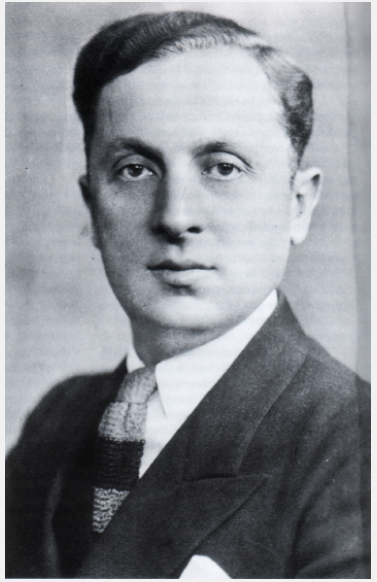
| Share this with a friend, right from here |
.
.
About Dave Tarras
The website of the Masters of Traditional Arts contains many interesting resources about Dave Tarras: bio, many more pictures, audios, discography… It starts like this:
“Dave Tarras, a native of southern Ukraine, learned to play the clarinet as a young man. By the time he immigrated to the United States in 1921 and settled in New York City, he was an accomplished musician. His first job in New York was in the fur industry, though in a relatively short time he began to play in Yiddish theater pit bands.”
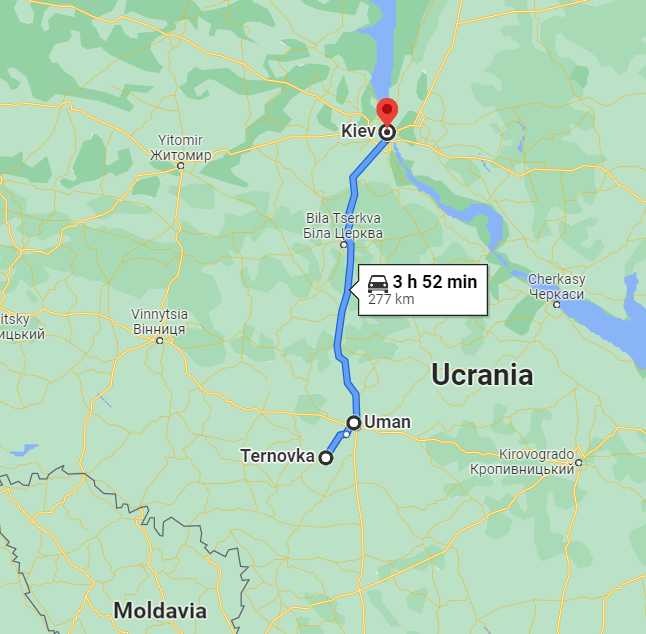 Ternivka was a shtetl in what was Russia at that time and that is modern-day Ukraine. It is 19 miles southwest of Uman, where Rebbe Nachman of Breslov is buried.
Ternivka was a shtetl in what was Russia at that time and that is modern-day Ukraine. It is 19 miles southwest of Uman, where Rebbe Nachman of Breslov is buried.
“There were Jews living in Ternivka as early as 1765. By the late nineteenth century the population had grown to almost three-thousand Jews (almost 53% of the total population). Ternivka’s Jewish population never got much larger than this size.
There was a Yiddish school and several synagogues; the latter were closed during the Soviet period.
Nazi forces occupied Ternivka in the summer of 1941, where they established a ghetto for the Jews of the region. Less than a year later, in May 1942, the ghetto was liquidated; 2,500 Jews were murdered in a nearby forest. Soviet troops liberated Ternivka in March 1944, after three years of Nazi terror.”
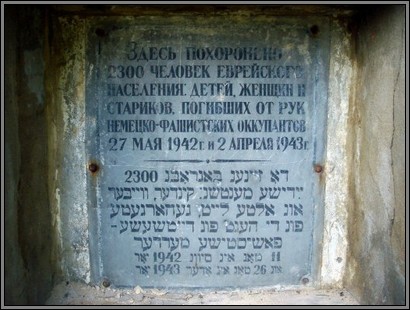 In “The mass grave site of Ternivka, Ukraina”, this page by Christine Usdin, you find this picture of the memorial. The text says: “Here are buried 2300 Jews, children, women, old people killed by the hands of the German- fascist occupants on May 27, 1942 and April 2, 1943.”
In “The mass grave site of Ternivka, Ukraina”, this page by Christine Usdin, you find this picture of the memorial. The text says: “Here are buried 2300 Jews, children, women, old people killed by the hands of the German- fascist occupants on May 27, 1942 and April 2, 1943.”
That page by Christine Usdin is really wonderful. Visit it! You will find many pictures of that special land, of the cemetery, the nature and the houses of Ternivka.
There is not Google Maps Street View of Ternovka / Ternivka. But it is of Uman! Let’s visit it.
Jewish Cemetery in Uman. Click on the pictures to open in Google Maps Street View:
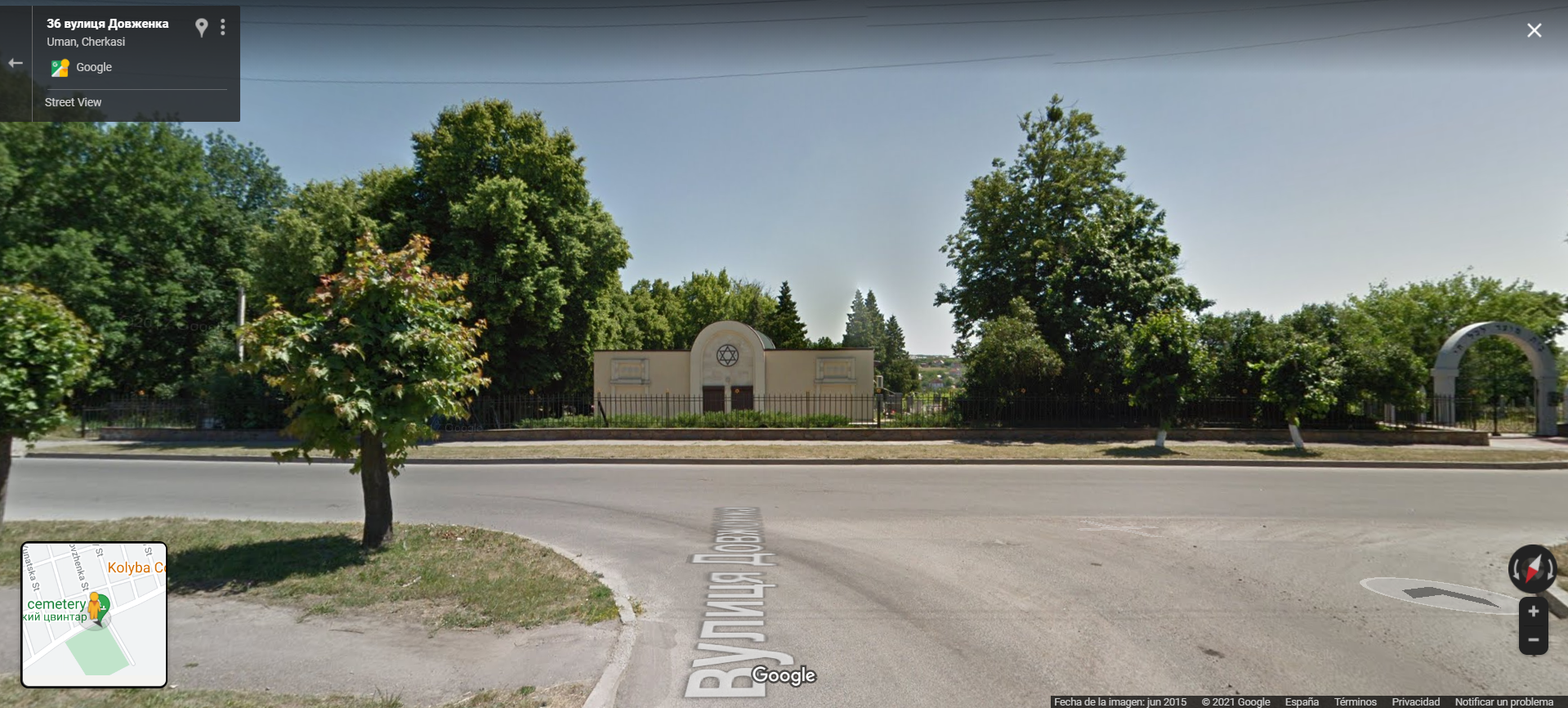
This is the entrance to the grave of the Rebbe Nachman of Breslov and synagogue in Uman:
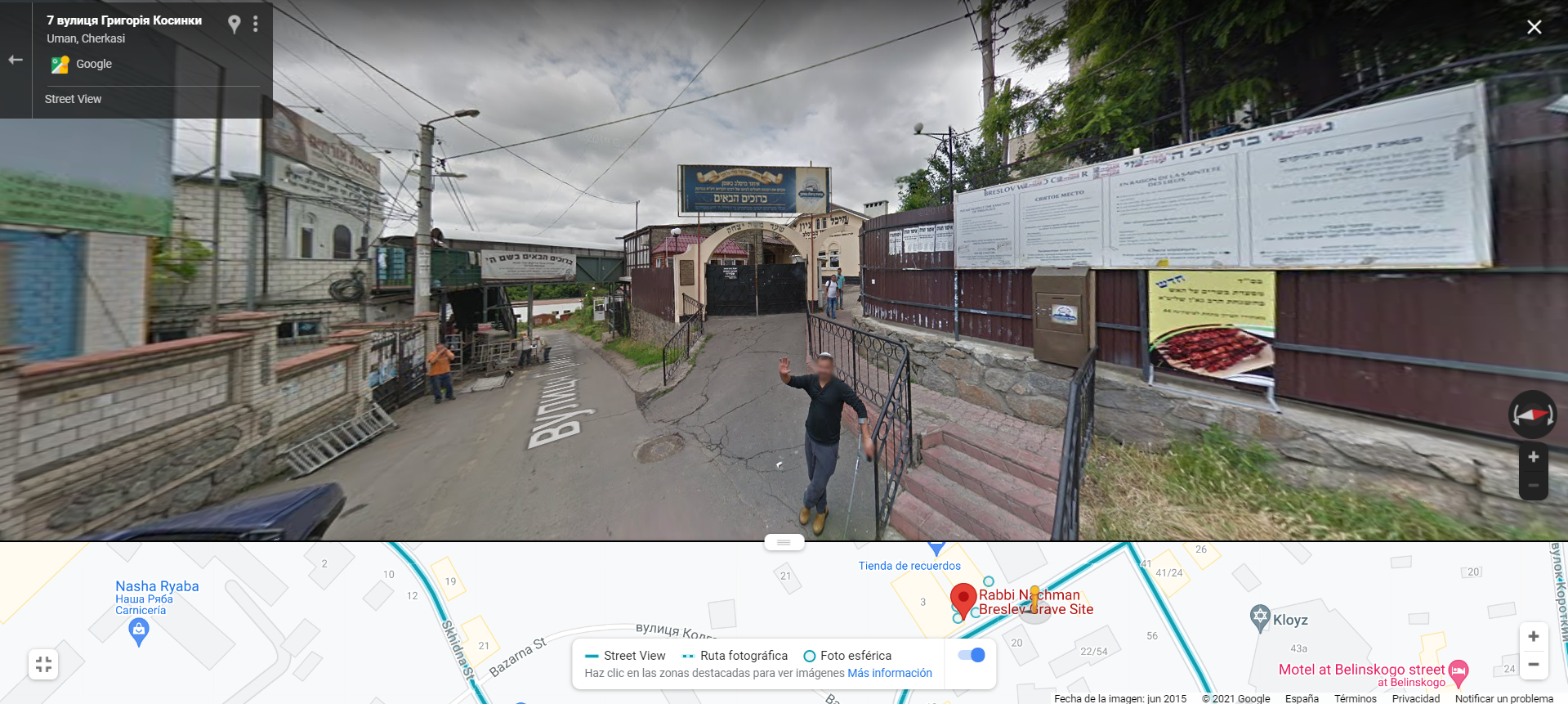
Who was the Rebbe Nachman of Breslov?
In the map of Uman, if you search for synagogues, there are around 12 points with the star of David. When you enter in the street view, some of them don’t see to be real synagogues and I am not very sure what they are but what is clear is the presence of Jewish culture in the city. Maybe because of the influence of Nachman of Breslov. Who was he?
Nachman of Breslov was the grandson of the Baal Shem Tov, the founder of the Hassidism. He was born in 1772 in Medzeboz (western Ukraine). He didn’t met his grandfather but he got the inspiration from many leaders who visited the Baal Shem Tov’s grave and stayed in the family house. The website of Breslov.org contains a nice biography, of which I take a paragraph that is specially meaningful to understand the relevance of Nachman:
“Rebbe Nachman breathed new life into Chassidut by translating the esoteric teachings of the Kabbalah into concrete, practical advice that anyone could use to better his or her own life. In addition to his formal teachings, the Rebbe told stories that contained the deepest mysteries of Torah. He said, “I see that my Torah teachings do not reach you; I will begin telling stories.” Rebbe Nachman’s innovations in delivering Torah discourses via his intricate lessons, as well as the stories that he told, made him a unique figure in the spread of Chassidut.”
Nachman of Breslov moved to Uman in the spring of 1810 and he died there, of tuberculosis.
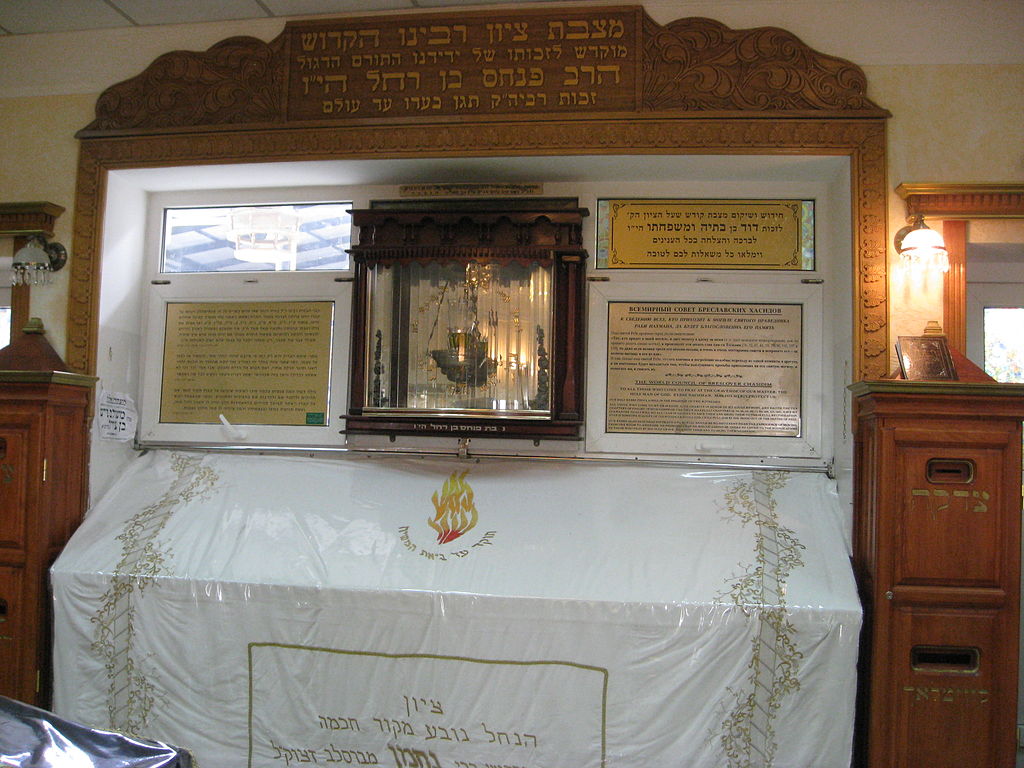
Back to Tarras!
I will take some key aspects of Dave Tarras’ biography from the links mentioned above:
- From 1925 until his death in 1989, Dave Tarras set the standard for the klezmer music in the USA. Well-known jazz legends such as Charlie Parker and Miles Davis studied his technique.
- Tarras was a third-generation klezmer musician. He played in the Czarist army up to World War I. It saved his life.
- After the World War I, progroms broke out. He got to scape to the west with his wife and arrived in the USA in 1920. He worked in a fur shop. In three years he was able to maintain his family working as a clarinetist.
- He recorded for Columbia and RCA Victor and played in many different environments, Jewish and not.
- He became the preferred accompanist for many popular figures in Yiddish theater, some of whom we have learnt before in MBS, like Moyshe Oysher, Seymour Rechzeit and Miriam Krassen, and many of the great cantors of the era, such as Leible Waldman and Jan Peerce.
- The radio allowed him to be known broaderly.
- After the Holocaust, the klezmer music started to be forgotten, because it brought memories of the east European roots of the audience.
- In the 1970, Andy Statman and Walter Zev Feldman rediscovered Tarras and organiced a tour with him and more klezmorin and Yiddish singers. Some young musicians became interested and this was the seed for the revival of Yiddish culture.
- Tarras died in 1989 in New York state.
About the music piece Chusen Kala Mazel Tov
“Chusen Kala Mazel Tov” means “good luck to the bride and groom”, therefore it is a song with the tematic of wedding. You can find it named just “Mazel Tov”. There are many versions so if you like the piece, feel free to make a search in Youtube.
In this version by Dave Tarras it is mentioned that he is accompanied by the orchestra of Abe Ellstein. About this man, the website of the Center of Jewish History explains that:
“Abraham Ellstein, songwriter, composer, conductor, and director of the American Yiddish theater, was born on the Lower East Side of New York City on July 7, 1907. […] He was a well-known accompaniest to numerous stars of the Yiddish theater. […] He composed over thirty scores for the Yiddish theater and film and more than 500 songs and was known as one of the “big four of Second Avenue,” along with Shalom Secunda, Joseph Rumshinsky, and Alexander Olshanetsky. […] Ellstein was also involved in Yiddish radio, hosting several regular programs on WEVD, including Yiddish folk music, theatrical music and cantorial and liturgical music. Additionally, he wrote and arranged English music for Broadway, radio, telelvision, popular music concerts, and films. His opera The Golem, based on the Jewish legend as well as on H. Leivick’s work, was commissioned by the Ford Foundation and premiered at the New York City Opera in 1962.”
We are so fortunate that this musical legacy has come down to us!
Click the picture to listen to Chusen Kala Mazel Tov played by Dave Tarras and the Abe Ellstein Orchestra:
| Share this with a friend, right from here |
